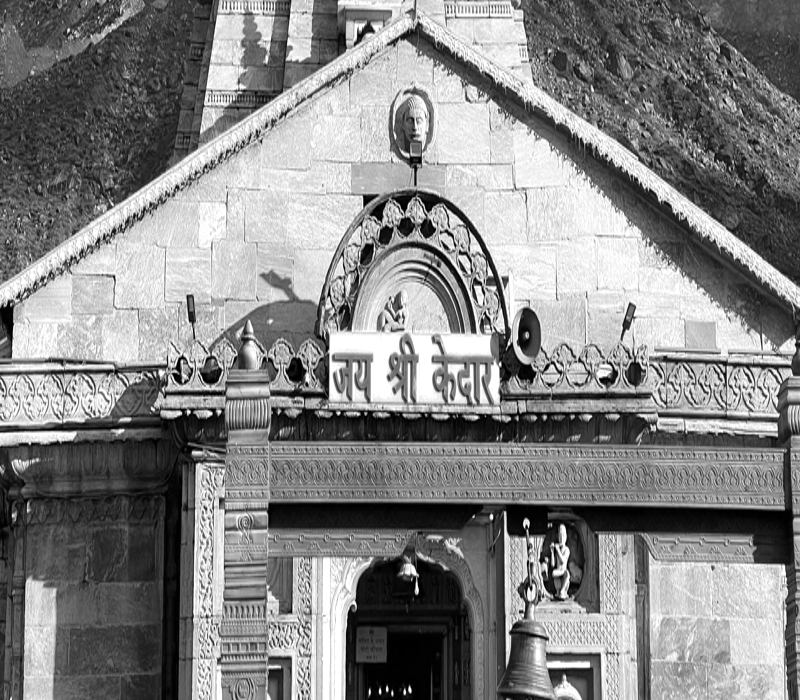- Offices: Dehradun | Dwarka New Delhi
Koteshwar Temple is an ancient and revered Hindu pilgrimage site located in the town of Rudraprayag, Uttarakhand, India. Nestled at the confluence of the Alaknanda and Mandakini rivers, this sacred temple holds immense religious significance for Hindus and attracts thousands of devotees from across the country. With its serene surroundings and spiritual aura, Koteshwar Temple offers a soul-stirring experience for visitors seeking solace and divine blessings.
Geographical Location and Accessibility:
Koteshwar Temple is situated in the Rudraprayag district of Uttarakhand, approximately 19 kilometers from the town of Rudraprayag. The temple's location at the confluence of the two holy rivers, Alaknanda and Mandakini, enhances its spiritual appeal. The Alaknanda river originates from the glaciers of Satopanth and Bhagirathi Kharak, while the Mandakini river originates from Chorabari Glacier (also known as Kedarnath Glacier). The convergence of these two rivers is considered highly auspicious in Hindu mythology.
Rudraprayag is well-connected by road, and visitors can easily reach Koteshwar Temple from major cities and towns in Uttarakhand. The nearest airport is the Jolly Grant Airport in Dehradun, approximately 159 kilometers away. The nearest railway station is Rishikesh, about 140 kilometers from Rudraprayag. From these transportation hubs, tourists can hire taxis or take buses to reach the temple.
Legend and Mythology:
Koteshwar Temple is steeped in ancient legends and mythology, adding to its religious significance. According to Hindu mythology, Lord Shiva is believed to have meditated at this very spot after performing the Tandava dance. The name "Koteshwar" is derived from the word "Koti," meaning crore (ten million), and "Ishwar," meaning Lord Shiva. Thus, Koteshwar refers to Lord Shiva, who is worshipped here in the form of a divine lingam.
It is said that when Lord Shiva was meditating, a large number of gods and goddesses descended from the heavens to witness his penance. In the process, the earth's crust got displaced, and the divine lingam of Lord Shiva was revealed. This sacred lingam is believed to be the original form of the deity and is the presiding deity of Koteshwar Temple.
Architecture and Design:
Koteshwar Temple showcases a blend of ancient and contemporary architectural styles. The temple's facade is adorned with intricate carvings and sculptures depicting various Hindu deities, mythological scenes, and symbols. The ornate spire, also known as the shikhara, rises gracefully above the main sanctum, reflecting the temple's spiritual significance.
The temple complex comprises several smaller shrines dedicated to various gods and goddesses, adding to the religious diversity of the place. A large number of devotees throng these shrines to offer prayers and seek blessings from their respective deities.
Rituals and Worship:
Devotees visiting Koteshwar Temple are greeted with an atmosphere of devotion and spirituality. The temple resonates with the melodious sounds of bells, hymns, and chants offered by the priests and devotees alike. The fragrance of incense permeates the air, creating an ambiance of divinity.
The main sanctum houses the sacred lingam of Lord Shiva, which is adorned with flowers and garlands as a mark of devotion. The temple priests perform elaborate rituals and offer prayers to the deity as part of the daily worship. The chanting of Vedic hymns and the rhythmic sounds of conch shells fill the temple, creating an atmosphere of peace and serenity.
The aarti ceremonies, held in the morning and evening, are special highlights of the temple's daily routine. During these aartis, devotees light oil lamps and offer them to the deity, symbolizing the dispelling of darkness and the illumination of spiritual wisdom.
Festivals and Celebrations:
Koteshwar Temple celebrates various Hindu festivals with great fervor and enthusiasm. The temple premises come alive with vibrant decorations and cultural performances during these occasions, attracting a large number of pilgrims and tourists.
Maha Shivaratri: Maha Shivaratri, the Great Night of Shiva, is celebrated with immense devotion and reverence at Koteshwar Temple. Devotees observe fasts, perform night-long vigils, and participate in special worship ceremonies to seek the blessings of Lord Shiva.
Makar Sankranti: Makar Sankranti marks the transition of the sun into Capricorn and is celebrated with joy and enthusiasm. Devotees take holy dips in the confluence of the rivers as a symbol of purification and spiritual renewal.
Navratri: Navratri, the nine-day festival dedicated to Goddess Durga, is celebrated with grand festivities at Koteshwar Temple. The temple witnesses an influx of devotees, who participate in special prayers, cultural events, and processions during this auspicious period.
Surrounding Attractions:
Koteshwar Temple's location at the confluence of the Alaknanda and Mandakini rivers makes it an ideal base for exploring nearby attractions and religious sites.
Confluence of Alaknanda and Mandakini: The confluence of the two sacred rivers is considered a significant spiritual destination, and devotees often take dips in the holy waters to seek blessings and absolve themselves of sins.
Guptkashi: Located approximately 33 kilometers from Koteshwar Temple, Guptkashi is famous for its temples and natural beauty. The ancient Vishwanath Temple and the Ardhanarishvara Temple are popular places of worship in Guptkashi.
Gaurikund: Gaurikund, situated around 38 kilometers away, is the starting point of the trek to Kedarnath Temple, one of the Char Dham pilgrimage sites.
Rudraprayag Town: Visitors can explore the town of Rudraprayag, which serves as a gateway to various nearby attractions. The town offers stunning views of the Himalayas and a chance to experience the local culture and traditions.
Conclusion:
Koteshwar Temple in Rudraprayag is a divine abode that holds profound spiritual significance for Hindus. The temple's location at the confluence of the Alaknanda and Mandakini rivers adds to its sacred appeal, making it a cherished destination for devotees and pilgrims seeking blessings and spiritual solace. The temple's serene surroundings, coupled with the ancient legends and rituals, create an ambiance of devotion and divinity, leaving a lasting impression on the hearts of its visitors.

